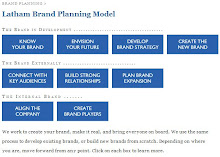Which is exactly what Ford is doing
Automakers continue to struggle.
Meanwhile, Ford continues to create contemporary messaging that taps into how people think and feel about their cars.
Ford continues their investment in the celebrated Drive One campaign, which actually is a breath of fresh air in a very boring, very predictable category, now into its third year.
Ford sales continue to grow.
And frankly, you can't imagine that a robust trend like this is going to reverse itself, not by a long shot, not anytime soon.
The moral, obviously, is run a healthy company. Build great cars. Innovate. Use technology to make cars great, safe, and fun.
Above all, know your customers, know how they think, and connect.
Then, make money.
Ford does it all, and does it exceptionally well.
Maybe Ford is the new Toyota.
Monday, March 22, 2010
Thursday, March 4, 2010
Wait a minute, I have a black box?
You do. It’s in your car.
Did you know there’s a system in your car, like an airliner’s black box, that captures critical data about your automobile, starting just a few seconds before your crash and continuing for a second or two after the airbags deploy?
You didn’t? Well, you do now. It’s called an EDR, electronic data recorder.
Depending on your car, it captures the speed you were traveling, the angle of your accelerator, your gear shift position, whether you were using your seat belt, even the angle of the driver’s seat. Some EDRs record data on brakes and the anti-lock braking system.
Toyota’s EDRs, for example, do all of that. And despite the gazillion cars it sells each year, until this week there has been only one U.S.-based laptop – one laptop in the entire country – capable of reading the data.
In other words, data from your Toyota crash is locked up in the EDR and Toyota’s laptop is the only key to getting it out.
In fact, until this week, according to the Associated Press, Toyota refused to allow access to the laptop and even the data, and only provided printouts, sometimes edited, when supoeonaed by a court.
Interestingly Ford, Chrysler and General Motors cars have EDRs, too. But they have open architecture that lets law enforcement officials – or anyone for the matter – recover the data in seconds. Nissan has something similar. But other car makers have other strategies. Honda, for example, also controls access to Honda crash data and their spokespeople say it’s only made available by court order.
The point here, tragically, is that Brand Toyota has just taken another hit.
This is absolutely is the worst case scenario for anyone managing a brand in a crisis.
If the only break in the crisis is one piece of bad news after another, that’s something no corporate television commercial can ever fix.
Toyota is still in critical condition.
Did you know there’s a system in your car, like an airliner’s black box, that captures critical data about your automobile, starting just a few seconds before your crash and continuing for a second or two after the airbags deploy?
You didn’t? Well, you do now. It’s called an EDR, electronic data recorder.
Depending on your car, it captures the speed you were traveling, the angle of your accelerator, your gear shift position, whether you were using your seat belt, even the angle of the driver’s seat. Some EDRs record data on brakes and the anti-lock braking system.
Toyota’s EDRs, for example, do all of that. And despite the gazillion cars it sells each year, until this week there has been only one U.S.-based laptop – one laptop in the entire country – capable of reading the data.
In other words, data from your Toyota crash is locked up in the EDR and Toyota’s laptop is the only key to getting it out.
In fact, until this week, according to the Associated Press, Toyota refused to allow access to the laptop and even the data, and only provided printouts, sometimes edited, when supoeonaed by a court.
Interestingly Ford, Chrysler and General Motors cars have EDRs, too. But they have open architecture that lets law enforcement officials – or anyone for the matter – recover the data in seconds. Nissan has something similar. But other car makers have other strategies. Honda, for example, also controls access to Honda crash data and their spokespeople say it’s only made available by court order.
The point here, tragically, is that Brand Toyota has just taken another hit.
This is absolutely is the worst case scenario for anyone managing a brand in a crisis.
If the only break in the crisis is one piece of bad news after another, that’s something no corporate television commercial can ever fix.
Toyota is still in critical condition.
Subscribe to:
Posts (Atom)


